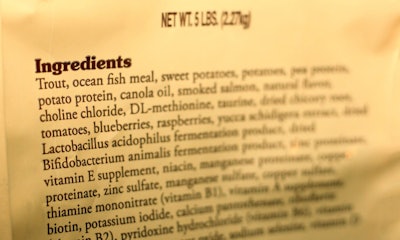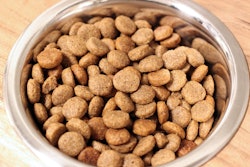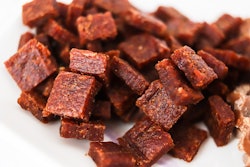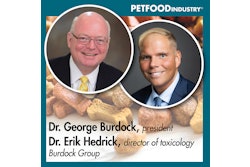
Anyone who works with pet food ingredients and tracks how they’re approved for use in pet food in the U.S. is likely aware of the long-standing memorandum of understanding (MOU) that established a working partnership for the Food and Drug Administration (FDA) to use the Association of American Feed Control Officials’ (AAFCO) Ingredient Definition Request Process as a means for vetting and approving ingredients. In essence, FDA’s responsibility to regulate and ensure the safety of animal feeds and pet food, at least when it comes to ingredients in them, has relied on the AAFCO process under this mutual agreement for 17 years.
And now everyone is probably aware of the announcement late last week (August 2, 2024) that FDA and AAFCO would not be renewing the MOU before it expires on October 1, 2024. This is significant and promises to shake up, even disrupt, the ingredient approval process. The question: Is that for better or worse?
‘Disappointment’ is the main reaction
According to statements from several industry associations, including AAFCO, this development is not positive. “AAFCO believes that its ingredient definition process has been a shining example of successful collaboration and partnership between states and the federal government,” said Austin Therrell, executive director, in a press release announcing the MOU’s end. “Although we are disappointed that the MOU is not being renewed, we are committed to being a conduit between FDA and state regulatory programs, and to our work to provide standardization to the animal food industry.”
Other organizations, such as the American Feed Industry Association (AFIA) and the National Grain and Feed Association, similarly expressed disappointment in the wake of the announcement.
Interestingly, one very vested organization has taken a neutral stance so far. A short statement from the Pet Food Institute (PFI), issued on August 2, read: “PFI will not take a position on this until we hear FDA’s transition plan and proposed process. PFI looks forward to participating in the public comment period that FDA outlined in its letter to stakeholders today and reviewing the guidance documents outlining the transition phase.”
Why is that interesting? Because in 2023, PFI proposed a wholesale change in how pet food ingredients are reviewed and approved, recommending that FDA have sole regulatory discretion over pet food ingredients, eliminating review and approval by state feed control officials. (AAFCO’s membership is comprised of those officials.)
Then, in February 2024, members of the U.S. House of Representatives introduced new legislation, the Pet Food Uniform Regulatory Reform (PURR) Act of 2024 (H.R.7380), which would “eliminate the state-level pet food label review process, favoring federal regulation to ensure consistency and efficiency, similar to human food standards; and codify AAFCO pet food ingredient definitions and marketing claims, aiming to eradicate state-level discrepancies that impede innovation, cause delays and lead to legal disputes,” according to a PFI press release. (Not surprisingly, PFI wholeheartedly endorsed the bill.)
Of course, PFI may not have known that FDA would not renew the MOU with AAFCO; I do wonder if introduction of the Purr Act spurred FDA toward its decision.
Has MOU’s shaky history led to this?
For what it’s worth, the MOU has had a shaky history. Back in 2016, there was also apprehension that it would not be renewed when it next expired, on October 1, 2017. Concerns expressed by industry regulatory experts at the time centered on FDA’s enforcement discretion of AAFCO’s ingredient reviews and on what might happen, if the MOU expired, to the 500-plus approved ingredients in the marketplace then.
“The problem with this cooperative activity is that although the AAFCO process is scientifically rigorous, from FDA’s perspective it is based on enforcement discretion — i.e., not a formally sanctioned procedure for acceptance of new feed ingredients,” wrote David Dzanis, DVM, PhD, DACVN, in a Petfood Insights column at the end of 2012, after the second extension of the MOU. Or, as George Burdock, PhD, president of the Burdock Group, explained, the MOU did not carry the force of law for FDA or at the national level, only being viable for those states that had chosen to adopt it.
It is unknown now whether that is FDA’s chief reason for not renewing the MOU. In terms of ingredients already in use, FDA has announced it will use enforcement discretion for the ingredients that are listed in the 2024 AAFCO Official Publication, “filling a gap for those ingredients that are neither a food additive or generally recognized as safe for an intended use,” according to AFIA. “The announcement also describes a new animal food ingredient consultation process to review new animal food ingredients while FDA conducts a larger evaluation of the current ingredient submission pathways.”
AAFCO said it and FDA will be sharing further details about the transition will be shared in the coming weeks. Those details can’t come soon enough for a critical part of pet food and animal feed now in flux. “AFIA expressed concern that dissolving the MOU will make the U.S. market less attractive for innovators by increasing uncertainty in regulatory review processes and potentially raising the time and costs for approving new animal food ingredients,” wrote my colleague, Elise Schafer.
Indeed. No market likes uncertainty and rarely succeeds during chaos.

















